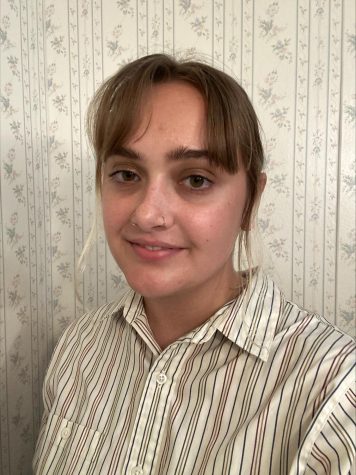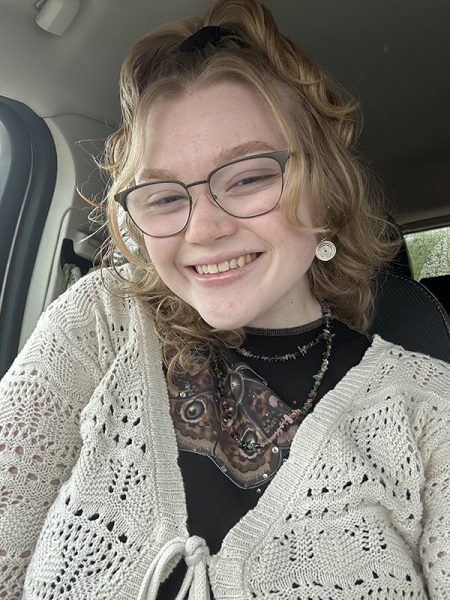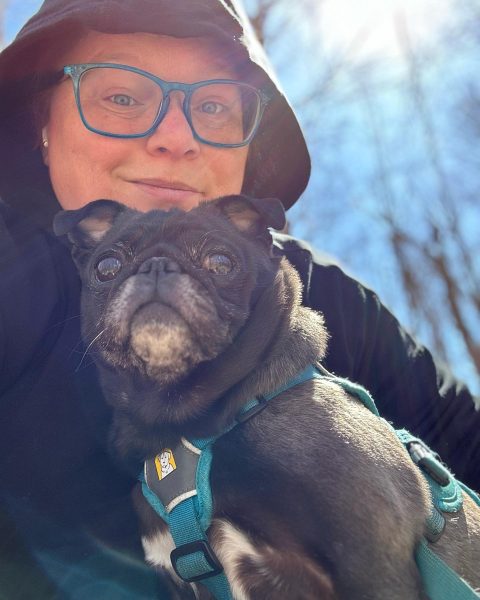A tale of two houses
The home in which I grew up had been occupied by McMahons for over a century. The red house on the corner of Franklin Street had been witness to four generations, observing as we moved through its walls, watching in on our joy and mourning, listening to our most private lives. My ancestors still exist through the collections of possessions that lingered when my parents became the house’s inhabitants. Furniture had lain dormant for years in the living room long after their original owners faded into the abyss of the past. Black and white portraits of the house in its original design hung on the walls, untouched for decades. Timeworn biblical texts, an old fur coat, a Kodak brownie camera- these items were all woven into the context of the house on Franklin Street.
In the summer of 2019, my dad had begun unloading the basement in preparation for our move; it was a system of items, buried over and on top of one another. There were bins of holiday decor packed to the brim, half-used paint cans leaking out into small puddles, and among the clutter, my father found a scrapbook. It was unearthed in the deepest crevasse of the stone cellar, caked with a layer of dust, crumbling, with dried, yellowed pages that smelt of mildew. The cover was the color of a cup of earl grey tea that sat on the counter for too long.
The scrapbook had belonged to Nathalie Robinson. Nat. My grandfather’s oldest sister, an artist who had lived in my house on Franklin Street until her death. I had never known Nat, but with each turn of the page, the idea I had of this woman came to life for me. Her scrapbook was from her high school years, filled with warn flyers for dances, dried and faded flowers, and even a thin, silver ring tucked into the spine of the book. Her curly dark hair was cut short and she dressed like a flapper in photos taken before an event with her sister, Dorothy. Her smile was wide and bright, and her dark eyes were fluorescent in the sense that they held veracity. She was my age a century ago, and although time separated us, I felt connected to her. I had always felt connected to her.
Nat was locally known for her paintings and taught lessons in her house, more specifically in the room that I had in my childhood. It was a small, yellow-painted room at the time of my birth; the sun glistened especially bright in the mid-afternoons. Her paintings still hung on the walls of my home for years; a cream-colored vase filled with flowers, lilacs, and ivy unfolding from it onto the table against a purple-walled background. Rustic Vermont farmhouses with oak trees growing outwards into the rich cerulean skies. Clouds caressing the treetops on a foggy autumn day. I was enthralled by one painting in particular of a scarecrow that my parents had on a wall in their room. It stared at me with hollow eyes, against a red barn, arms outstretched to each side. These paintings intrigued me in a way I cannot quite fathom. An intensity that festered until it took hold of me. From a young age, I experienced an interest in art, although no one in my immediate family presented that fascination to me. The interest had come from somewhere, somewhen perhaps.
I have a theory on houses, on buildings all together. They bind the past; they are places where the inhabitants stay indefinitely. The influence of Nat existed in a place so familiar to her. By occupying her space, I became impacted by her interest in art, and in the identity of her all together. The room that was mine, Nat’s room, always held a different atmosphere than the rest of the house. Up the stairs, it was the first door to the left. It was as if crossing the doorway put a person in a different time all together. The air would shift and an almost uncomfortable weight would be set upon my shoulders, as if I were intruding. And maybe I was; Perhaps fifty years prior my great-aunt had stood before me, feeling the same way I was, as if she was invading the bedroom of a person who didn’t even exist yet.
We stare at each other; two women laced together onto the tapestry of the McMahon lineage. Aware of each other only through the suffocation of a room set between the lines of time. Nathalie, behind her easel, an old woman now with graying hair and lines set into her face, reflecting on the experiences she had. Me, a young girl, opening her door inwards revealing a specter emulated through emotion. We stand together, unburdened by one another, as we immerse each another in the idea of who we are.
My interpretation of time is that it is not linear. I lived in a house where multiple generations of a family could exist all at once, even if they never met. My great grandmother, also called Hannah McMahon, had lived in the house on Franklin Street. In the never-ending cave that was the basement, I found a postcard sent to her from Florida in the 1950s. To see my name on the address was almost as if I stepped through time and existed as the Hannah before, receiving a technicolored photograph of orange trees and alligators. The existence of these people was never enough for me. I had to understand them, make complete sense of who they were.
In 2019, my family moved from Barre City to Barre Town, as my great-aunt Helen had left my father her house. Helen was my grandmother’s sister, the second-to-last of the Donahue girls of Graniteville. She was a woman of fierce personality that stayed with anyone who knew her. An educator; first an elementary teacher and then a principal later in her career. Well renowned by her contemporaries for her educational influence, she had begun teaching after graduating from Johnson in 1943, back when it was solely a teacher’s college. With the grief that I experienced from her death; I was reluctant to inhabit her house. She had it built in the latter half of the 1950s; a red, one story, ranch style home that sits on the boarder of Barre Town and East Montpelier. The room that would be mine had been her storage room. It faced the drive way below, and it looked out into the woods that surrounded the property.
From a young age I spent a great amount of time with my great aunt. Some of my earliest memories are of the tea parties that my sister and I would put on every time we went to her house. Sipping Ginger-Ale through the green tinted shot glasses, we dined on pasta and jelly beans, dressed up in her scarves. She would play the piano for us and I would know then, it was a day well spent. For me, nostalgia is summer days at Helen’s. Drinking a cold soda on her back deck and tasting that deliciously mac and cheese that I would beg her to make anytime I was over. It was a time and a place where the colors were more vibrant and the blue technicolor sky shown brighter.
In the weeks leading up to the move, I had a recurring dream where I would get out of bed in the night and find Helen sitting at her piano, light illuminating her. She was young in the dream, with a face etched so similarly to my own. We studied each other through the wooden-rimmed mirror that hung above the piano in the living room. Sometimes I stand in a part of her house that hasn’t changed since she lived there. I let myself detach from consciousness and pretend that I’m still in her house, Helen still sitting in the room next to me.
My eccentric perception on houses comes from a deeply rooted desire to know those who existed before me. Learning about Nat, thinking how her and I were so similar, how we would have been friends, causes me to be drawn to the past to seek answers for my present self. Like myself, Nat was fascinated in spirits, tarot, and the unexplained. Living in Helen’s house has allowed me a lingering connection to a beloved great-aunt who I still find present in the rooms she was familiar to. Certain slants of light of the afternoon capture my attention and entrance me into a time before my own. I can exist within and without myself to understand how the foundation for my being was brought forth through the houses I’ve inhabited.







Patty Demingware • Nov 15, 2022 at 5:55 pm
Hannah, another beautifully written story! Your writings keep me wanting the story to continue. You have an amazing talent.